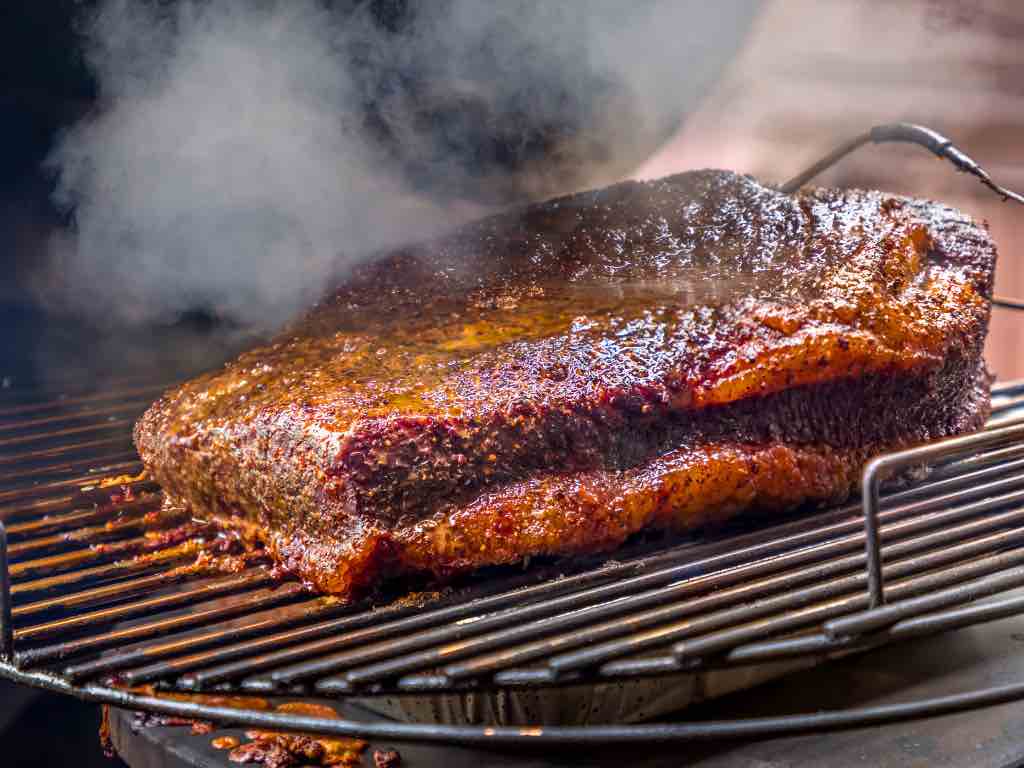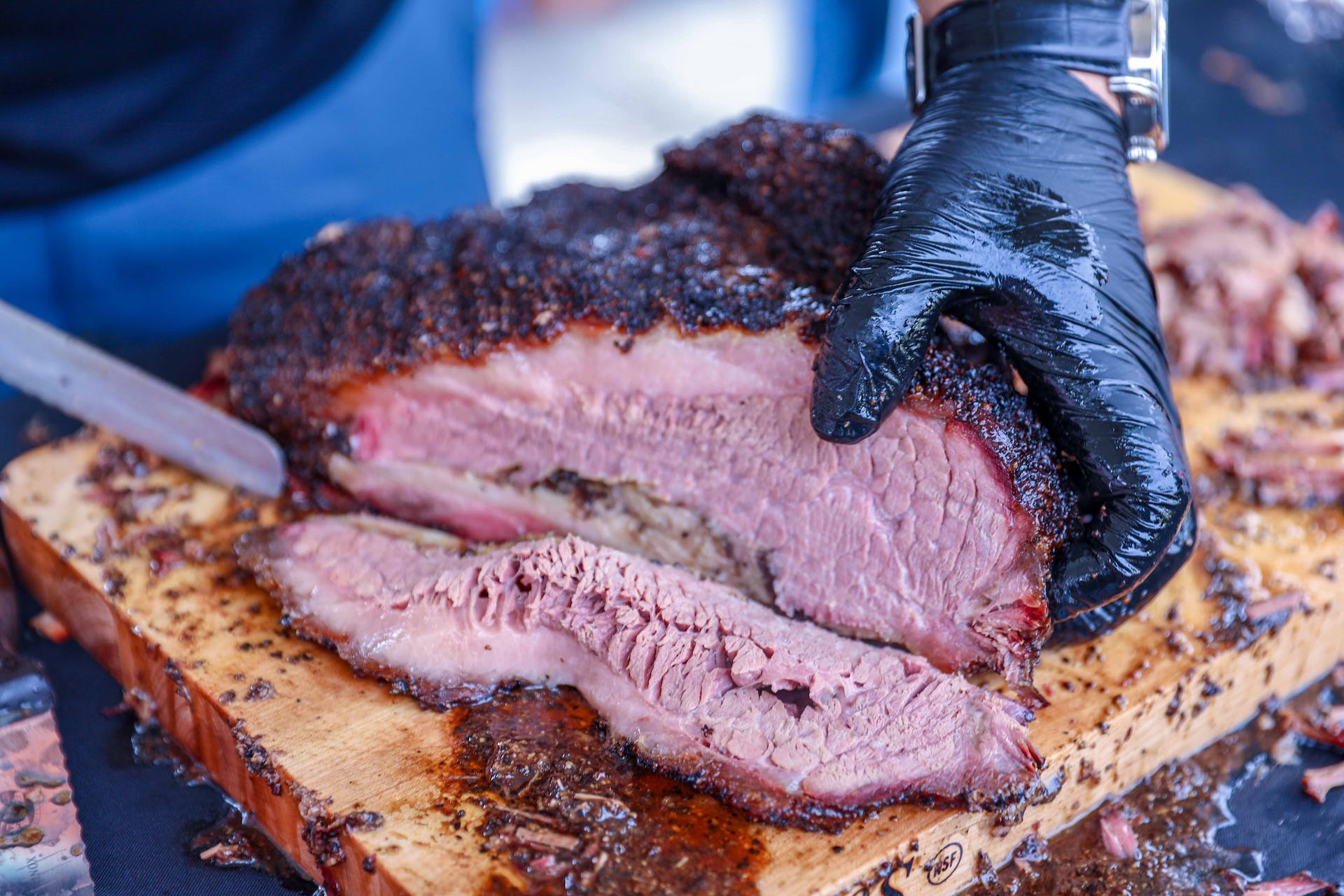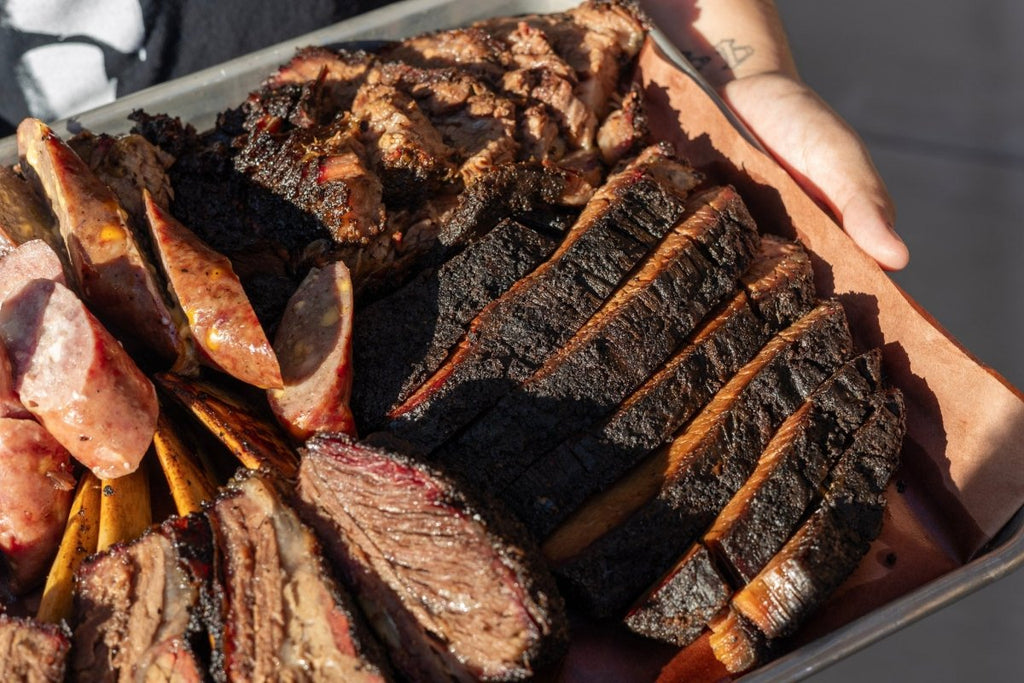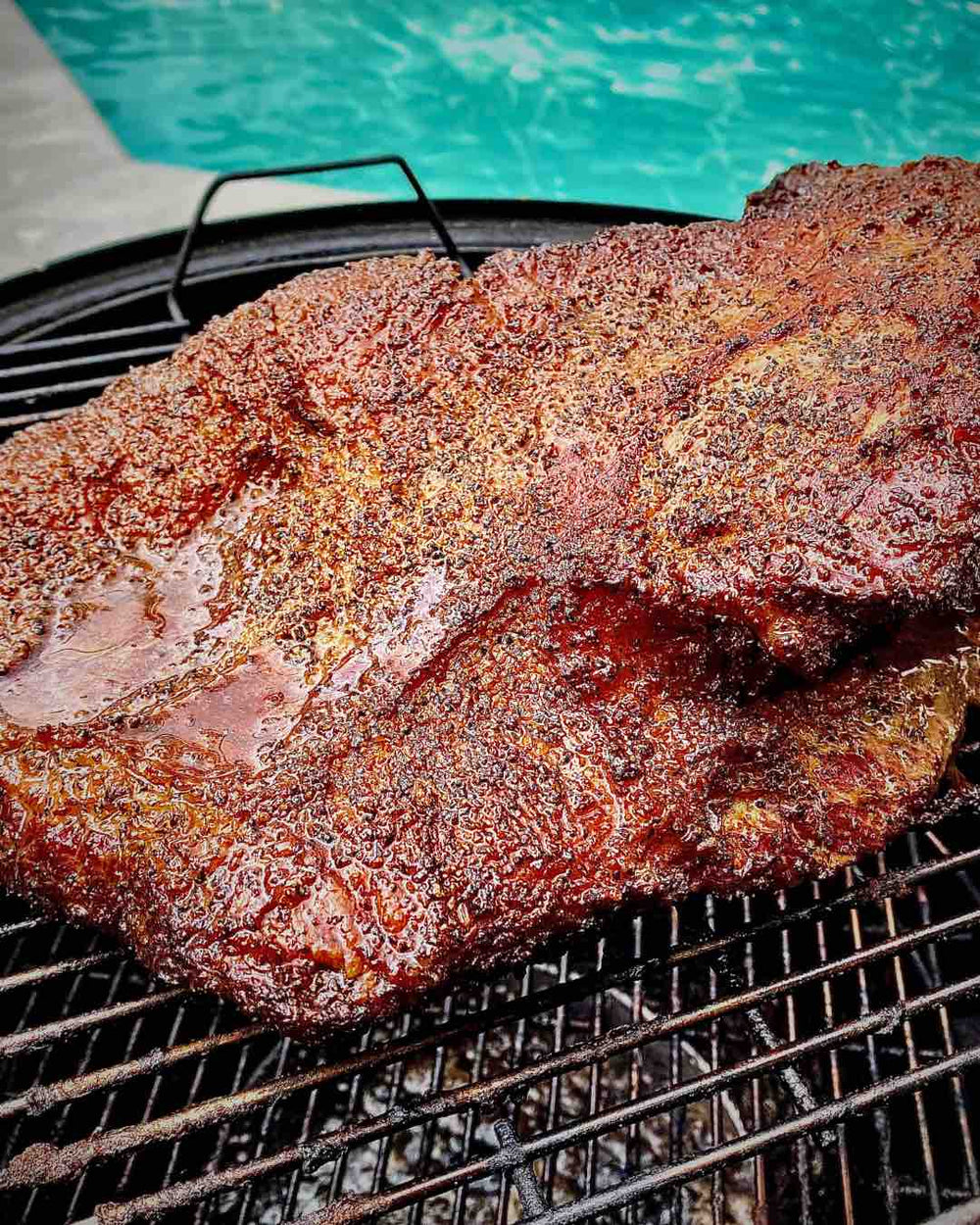
Introduction
Exploring the Art of Keeping Brisket Warm
When it comes to barbecue, brisket is undoubtedly the star of the show. Picture this: a succulent, smoky piece of meat resting in the center of a gathering, its aroma inviting mouths to water and conversations to flourish. However, to achieve the ultimate brisket experience, one must master the art of keeping it warm after cooking. This process is pivotal in ensuring that the brisket not only retains its flavor but also maintains that tender, melt-in-your-mouth texture that everyone craves.
Keeping brisket warm is a delicate balancing act. It requires you to think about the temperature, the cooking methods used, and the materials at hand. As someone who has embarked on many a culinary journey, I can share that the moment I learned effective techniques for preserving the warmth of my brisket was a game-changer.
Why is Keeping Brisket Warm Important?
Maintaining the warmth of a perfectly cooked brisket isn’t merely about convenience; it significantly impacts the quality of the meat. Here’s why it matters:
- Texture Preservation: A warm brisket retains its juicy texture. The longer it stays at the right temperature, the softer and more tender it becomes.
- Flavor Retention: Keeping brisket warm allows flavors to meld and deepen, enhancing the overall taste experience.
- Serving Temperature: Guests savor food more when it’s served at optimal temperatures. Warm brisket invites everyone to dig in right away, enhancing the experience.
- Moisture Control: Proper techniques prevent the brisket from drying out, a common pitfall for many BBQ enthusiasts.
In short, keeping brisket warm is not just a practical necessity; it is an integral part of creating a truly memorable BBQ experience, ensuring that each bite leaves a lasting impression.

Understanding Brisket
What is Brisket?
Brisket is a beloved cut of meat that hails from the chest area of the cow, known for its rich flavor and unique texture. This cut consists of two primary muscles: the flat and the point.
- The Flat: Leaner, offering uniform slices, it’s often favored for its clean appearance and tenders perfectly when cooked right.
- The Point: Fattier and more marbled, this muscle provides succulent bites packed with flavor, enhancing the overall experience of any brisket dish.
Having cooked many briskets over the years, it’s fascinating how the interplay of these two distinct parts can create a culinary masterpiece when prepared with care.
Importance of Properly Cooking Brisket
Cooking brisket properly is essential for achieving that elusive melt-in-your-mouth tenderness and rich flavor profile. Here’s why it matters:
- Texture: Proper cooking breaks down the tough connective tissues, making the brisket tender. Undercooking can leave the meat chewy and unappetizing.
- Flavor Development: Slow-cooking at low temperatures allows the natural flavors of the meat to flourish, creating a depth of taste that’s hard to replicate.
- Moisture Retention: Keeping brisket moist while cooking is crucial for preserving its juiciness. Utilizing techniques like the Texas crutch—wrapping in foil once it reaches 160°F—can help maintain moisture.
Factors Affecting Brisket Temperature
Several factors can influence the cooking temperature and time of brisket:
- Thickness and Size: Larger cuts of brisket will naturally require more time, as they take longer to reach the desired internal temperature.
- Cooking Method: Smoking at temperatures between 225°F to 250°F imparts that essential smoky flavor but requires patience.
- Weather Conditions: For outdoor cooks, wind and ambient temperature can affect the cooking process, potentially causing fluctuations in cooking time.
Understanding these factors ensures that from the moment brisket hits the smoker to the last slice on the plate, each step is taken with care and precision.

Techniques for Keeping Brisket Warm
Wrapping Brisket in Foil
One of the simplest yet most effective techniques for keeping brisket warm is to wrap it in foil. Once your brisket reaches an internal temperature of around 160°F, wrapping it tightly in aluminum foil helps retain moisture while allowing the meat to continue absorbing smoke. This wrapping technique is essential for preventing the bark from becoming soggy while also keeping the heat locked in.
- Tip: Use heavy-duty aluminum foil to prevent tearing, and wrap it snugly to ensure no heat escapes.
Using Insulated Coolers
The insulated cooler technique, often referred to as the “Cambro method,” is a game-changer. After cooking, simply wrap your brisket in towels and place it in an insulated cooler. This method holds the heat for hours, allowing the brisket to rest and the juices to redistribute.
- Important Note: Preheat the cooler with hot water for about 30 minutes before placing the brisket inside for an optimal heat retention boost.
Utilizing Warming Drawers
If available, using a warming drawer can be another efficient way to keep brisket warm. Set the drawer to a low temperature, around 170°F, and place your wrapped brisket inside. This method is particularly useful when you need to hold the brisket for a couple of hours before serving.
- Personal Experience: I once kept a brisket warm this way while preparing side dishes, and it emerged just as juicy and flavorful as when it came off the smoker.
Employing Oven Method
Another reliable method is to place the brisket in your oven, tightly wrapped in foil, and set it to 170°F. After an hour, simply turn off the oven and leave the door closed. This method can keep the brisket warm for a few hours without overcooking it.
- Caution: It’s essential not to open the oven door during this period; doing so will let the heat escape and affect the results.
Trying the Faux Cambro Technique
For those looking for an alternative to coolers, the Faux Cambro technique involves using a cooler filled with heated towels or blankets. Wrap your brisket and place it inside this cozy setup to help it maintain warmth. This method is particularly useful for those without an insulated cooler on hand.
- Quick Recap: It’s all about creating a warm environment: wrap, insulate, and let it rest for maximum flavor!
Each of these techniques has its charm, and the choice largely depends on personal preference and available resources. Mastering these methods ensures that your brisket remains warm and delicious, ready to impress your guests whenever they arrive.

Tips for Maintaining Brisket Warmth
Preheating Equipment
Before you even begin cooking, taking the time to preheat your equipment is crucial for keeping your brisket warm. Whether you’re using an oven, cooler, or warming drawer, ensuring these are toasty before placing your brisket inside helps create an optimal environment for heat retention.
- Tip: If you’re using an oven, set it to around 170°F before you place the brisket inside. Preheating will minimize the temperature shock when the meat is added, allowing it to stay warm longer.
Monitoring Internal Temperature
One of the most critical aspects of keeping your brisket warm is keeping an eye on the internal temperature. Use a reliable meat thermometer to monitor this. Aim to maintain the temperature between 140°F and 170°F, which is the safe zone for holding cooked meats.
- Personal Experience: I remember a time when I was preparing for a BBQ and got distracted. By keeping the thermometer handy, I was able to save my brisket from dipping below the safe temperature range.
Avoiding Continuous Opening of Containers
Every time you peek inside a container or open the oven door, you risk losing heat. Try to resist the temptation to constantly check on your brisket. Instead, remain patient and trust the process.
- Pro Tip: If you must check, do it quickly! Opening the door just a crack can send your carefully maintained warmth out into the air.
Resting Brisket Properly
After the brisket is cooked, proper resting is essential for maintaining warmth and moisture. Wrap your brisket in foil or butcher paper and then in old towels. This method not only locks in heat but also allows the juices to redistribute throughout the meat, enhancing its tenderness.
- Recommendation: Let the brisket rest for a minimum of two hours. I learned this from experience; the first time, I didn’t allow enough resting time, and while the brisket was tasty, it wasn’t as tender as it could have been.
Utilizing these tips will set you up for success in keeping your brisket warm, ensuring that every bite is flavorful and juicy when it’s time to serve. Happy cooking!

Recipes for Delicious Warm Brisket
Classic Smoked Brisket Recipe
There’s nothing quite like the taste of a classic smoked brisket. This recipe embraces the time-honored method of slow cooking while allowing the rich flavors of the beef to shine through. For this recipe, you’ll need:
- Ingredients:
- 1 whole brisket (around 10-12 pounds)
- Salt and black pepper for seasoning
- Wood chips (hickory or oak) for smoking
- Instructions:
- Preheat your smoker to 225°F.
- Generously season the brisket with salt and pepper.
- Place the brisket on the smoker and cook until it reaches an internal temperature of 203°F.
- Wrap it in butcher paper or foil and let it rest in a cooler for at least two hours before slicing.
This style of preparation ensures the brisket is both flavorful and incredibly tender.
Texas-Style Brisket Recipe
If you want to dive into authentic Texas BBQ, this recipe is for you. The key is simplicity, allowing the beef to take center stage.
- Ingredients:
- 1 whole brisket (select USDA Choice or Prime)
- Classic Texas-style rub (equal parts salt and coarse black pepper)
- Optional: garlic powder for an extra flavor kick
- Instructions:
- Trim the brisket, leaving about 1/4 inch of fat cap.
- Apply the rub generously and let it sit for at least an hour or overnight.
- Smoke at 225°F, aiming for that all-important 203°F internal temp.
- Rest in a cooler for two hours before slicing against the grain.
The result? A juicy brisket with a beautiful bark and tons of flavor.
Moist and Tender Brisket Recipe
For those worried about the dryness, this recipe focuses on moisture retention through a clever cooking technique.
- Ingredients:
- 1 whole brisket
- Your preferred rub
- Beef broth for moistening
- Instructions:
- Preheat your smoker to 225°F.
- Season the brisket and place it directly on the grill.
- When it hits around 160°F, wrap it in butcher paper, adding a bit of beef broth.
- Continue cooking until reaching 203°F and rest.
This method keeps the brisket incredibly juicy, making it perfect for guests.
Spicy Rubbed Brisket Recipe
If you’re looking to spice up your brisket experience, a spicy rub can do wonders.
- Ingredients:
- 1 whole brisket
- A blend of paprika, cayenne, garlic powder, salt, and black pepper
- Instructions:
- Combine all spices to create your rub.
- Apply it generously to the brisket and let it rest for a few hours.
- Smoke at 250°F until it reaches 205°F, then wrap and rest.
This recipe adds a nice heat to the smoky flavor, ensuring your brisket stands out at any gathering.
These brisket recipes are not just about cooking meat; they are about creating culinary experiences that family and friends will remember. Enjoy experimenting with flavors, and happy cooking!
Conclusion
Recap of Essential Warmth-Keeping Methods
As we wrap up our journey into the world of brisket, it’s essential to highlight the key methods for keeping your masterpiece warm without compromising quality. These techniques ensure that when it’s time to serve, each slice of brisket remains juicy, tender, and full of flavor.
- Wrapping in Foil or Butcher Paper: Once the brisket reaches around 160°F, a tight wrap helps retain moisture while allowing it to continue absorbing smoke flavors.
- Using Insulated Coolers: The Faux Cambro technique is an excellent way to maintain warmth. Wrapping brisket in towels and placing it in a preheated cooler creates a cozy environment for resting.
- Oven Method: Setting your oven to a low temperature of around 170°F allows you to hold the brisket for an extended period without overcooking.
- Monitoring Internal Temperature: Keeping track of the brisket’s temperature is crucial to ensure it remains within a safe and tasty range.
- Properly Resting: Never skip the resting stage! It allows the juices to redistribute, enhancing flavor and tenderness.
Final Thoughts on Mastering Brisket Warmth
Mastering the art of keeping brisket warm takes practice and patience, but the results are well worth the effort. A well-cooked brisket can elevate any gathering, turning an ordinary meal into a memorable feast.
From my experience, I’ve learned that each cooking session teaches something new—whether it’s about managing heat or the joy of sharing delicious slices with friends and family. The thrill of pulling off that perfect brisket is unmatched, and with these warmth-keeping techniques, you’re on the path to becoming a true brisket master.
So, fire up your grill, implement these methods, and enjoy the rewards of your culinary efforts. Happy smoking, and may every brisket you serve be a delicious success!

Leave a Reply